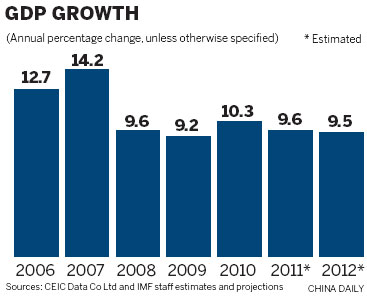After Monday night’s audit, I’ve fielded a number of questions about the city’s debt. And it’s been fairly easy to discuss because as a council member (and your Mayor), debt discussions have been happening in our city for over a year – long before the audit confirmed our concerns about issues such as the golf course.
Here are a few facts and comments I have on the debt issue and some clarifications that might help you understand more of what that debt load is and what it means to you as a citizen.
As of today, the city has a debt load of approximately $14.27 million (that’s the principal balance today). That number comes from the debt schedules for the six (6) debts currently being paid by the city. This debt load does NOT include any Water/Wastewater projects because that debt is covered and paid for by water/sewer collections.
The first instinct (mine included) is “WOW – that’s a lot of debt!” Well, it is…but. (There always seems to be a “but” in politics). Of that $14.27 million debt, $10.18 million is supported (and currently being paid on time) by sales tax revenues…voter-approved sales tax revenues. A big chuck of that (approximately $8 million or 80%) is for recent voter-approved projects like the Civic Center, Senior Center, South Street Bridge, and the Howard Bush Drive Extension. As of now, those projects ARE fully supported by the sales taxes being collected and are NOT a draw on the city’s general fund. (Let’s ignore for a moment that the projects had overruns and part of the street projects were never completed –that’s a separate and important discussion, but outside the scope of looking at the debt load today.)
To cut to the chase, $10 million of our debt is current financed by sales taxes. As long as sales taxes remain at the levels they are, we’re good on that portion of the debt.
That leaves us with just over $4 million of debt that is the real headache – broken down, it is $3.4 million for the golf course and $650K for the airport. This debt is (in a perfect world) supported by fees from things like hangar rent and golf course fees. It’s when that perfect world becomes not so perfect (and that’s where we are today) that issues arise.
It’s no secret that golf revenues are down. It’s no secret that the golf course has NEVER covered its full load of debt since adding 9 holes of play in the early 2000’s. It’s no secret that for the past decade or so, our general fund has spent funds it could otherwise use elsewhere (including for police and fire) to make those payments! Combine that with a financial crisis caused by the 2008-2009 fund “borrowing” that occurred under the previous administration and we’re in a really tough spot.
The good news is that we’re really only having to focus on $4 million of debt right now – not the entire $14 million. The good news is overall sales tax revenues have rebounded in the past few months and are slightly ahead of last year’s collections. The bad news is we’ve cut some essential services and cut pay and staffing to ensure we can keep paying on that $4 million debt.
In the long run, cuts in pay and services cannot continue. Our city employees do a great job. They deserve a fair wage for a day’s work. Our staffing in police MUST come back up. Our fireman MUST stay on the job after federal assistance runs out in 2013. Streets must be better maintained. Parks must be mowed. Equipment and facilities must be maintained. Worn our equipment must be replaced. It all costs money…money that we currently don’t have but will NEED to keep our city functioning years into the future.
I hope these comments have been helpful. I could spend the next hour or more laying out more detail, but that’s for another day and another post. Until then, know that your city council is working hard to find solutions to these issues. Know that the past mismanagement is no longer happening in our city. We’ll never be perfect (no one is) and it’s easy to criticize when mistakes happen, but your city is back to being run like a city should be run – open and honest communication – proper council oversight – decisions based on fact and the overall good of ALL of Neosho.
It’s an honor to serve. I love our town. I hope you agree we’re finally starting to head in the right direction.


